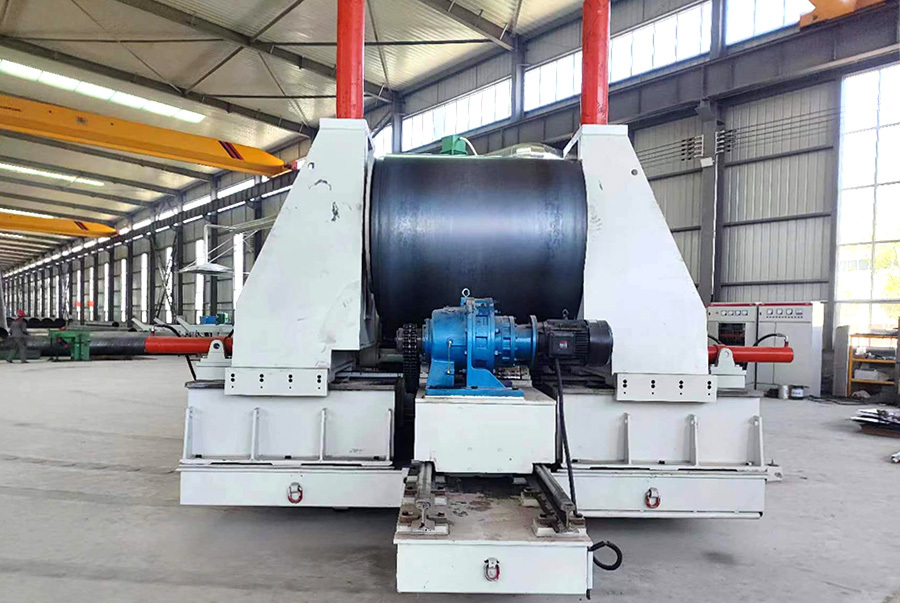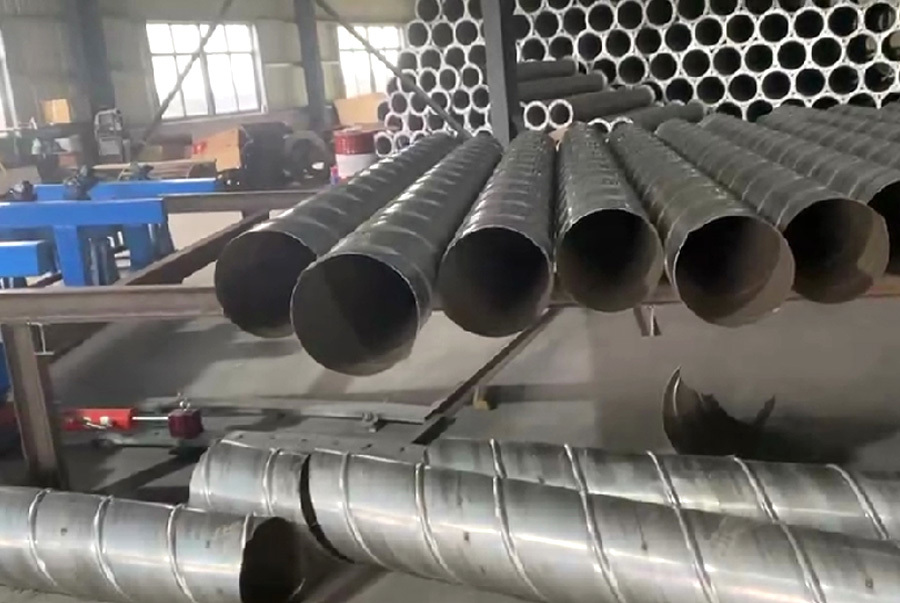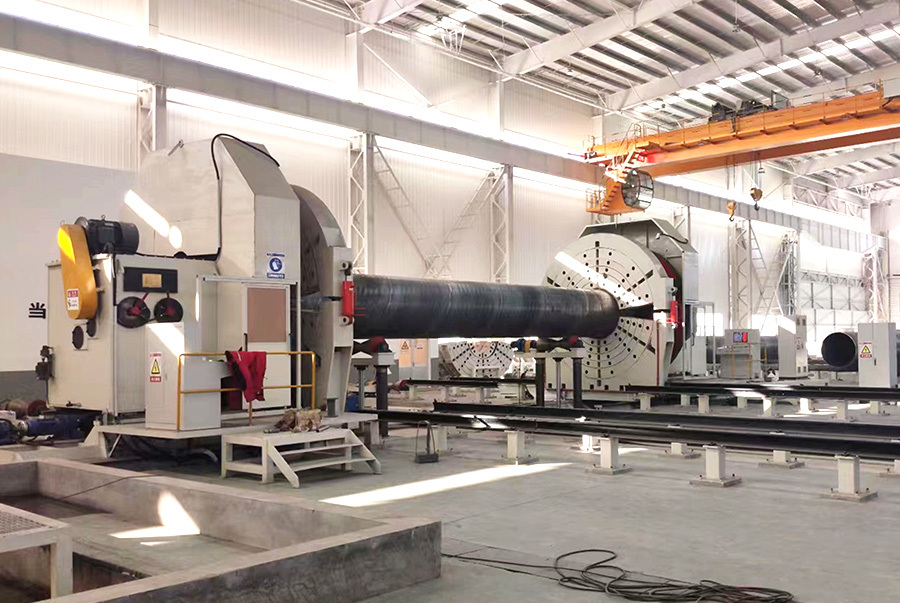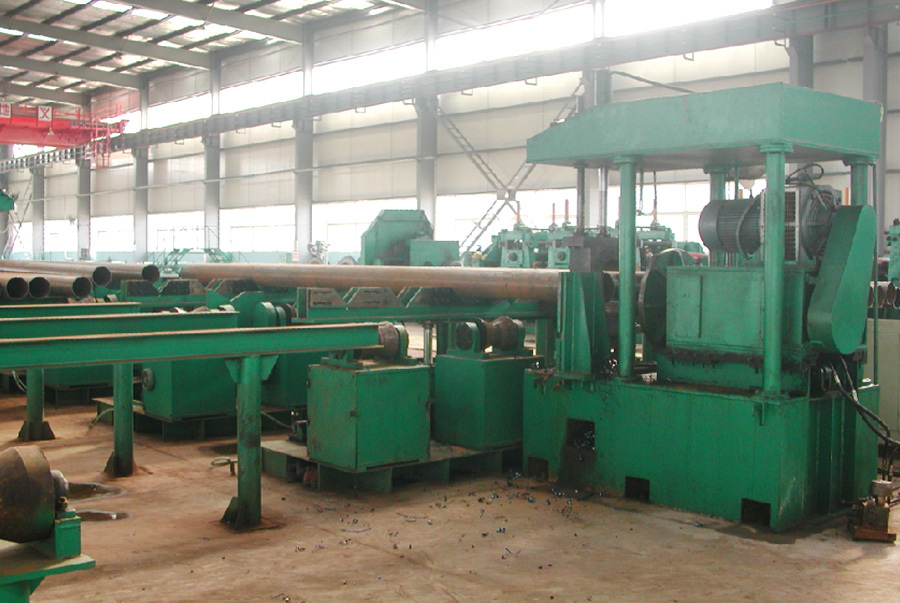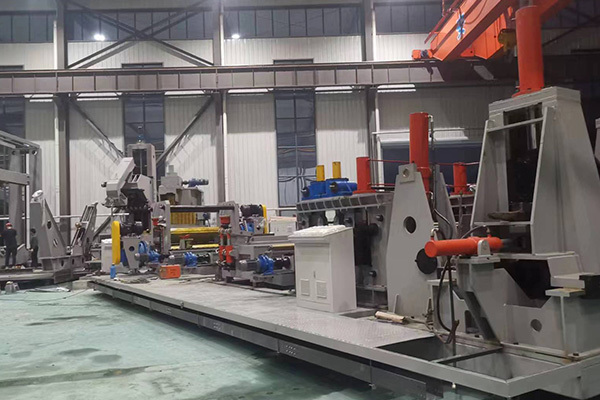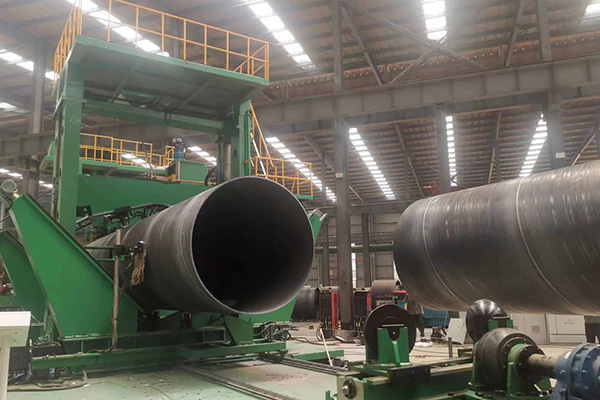The Economic Impact of Pipe Welding Equipment on Manufacturing: A Comprehensive Analysis
23 Mar,2025
The Economic Impact of Pipe Welding Equipment on Manufacturing
Introduction: The Role of Pipe Welding Equipment in Modern Manufacturing
In the ever-evolving landscape of manufacturing, pipe welding equipment stands out as a critical component that enhances productivity and efficiency. The integration of advanced welding technologies not only streamlines processes but also significantly impacts the
The Economic Impact of Pipe Welding Equipment on Manufacturing
Introduction: The Role of Pipe Welding Equipment in Modern Manufacturing
In the ever-evolving landscape of manufacturing, pipe welding equipment stands out as a critical component that enhances productivity and efficiency. The integration of advanced welding technologies not only streamlines processes but also significantly impacts the economy of manufacturing sectors. This article delves into the multifaceted economic ramifications of pipe welding equipment, exploring its influence on operational efficiency, cost savings, workforce dynamics, and overall market competitiveness.
Understanding Pipe Welding Equipment
Types of Pipe Welding Equipment
Pipe welding equipment encompasses a variety of tools and machines designed to facilitate the joining of pipes through welding processes. Key types include:
- **Electric Pipe Welding Machines**: Utilizing electricity for welding operations, these machines are known for their precision and efficiency.
- **MIG Welders**: Metal Inert Gas (MIG) welders are popular for their ease of use and versatility in producing high-quality welds.
- **TIG Welders**: Tungsten Inert Gas (TIG) welding equipment offers superior control for intricate welds, making it preferable for specialized applications.
How Pipe Welding Equipment Works
Pipe welding equipment operates through various welding techniques, including arc welding, gas welding, and resistance welding. Each method has specific applications depending on the material and desired joint characteristics. Understanding these processes is essential for manufacturers aiming to optimize their production lines.
The Economic Benefits of Advanced Welding Equipment
Enhanced Efficiency and Productivity
One of the primary economic impacts of advanced pipe welding equipment is the significant increase in efficiency and productivity. Modern machines can perform faster and with greater accuracy, resulting in:
- **Reduced Production Time**: Streamlined processes mean shorter lead times and quicker turnaround on production schedules.
- **Higher Output**: Enhanced welding capabilities allow manufacturers to increase their production volume without compromising quality.
Cost Reduction Strategies
Investing in state-of-the-art pipe welding equipment leads to substantial cost savings over time. Key aspects include:
- **Lower Labor Costs**: Automation and advanced technology reduce the need for manual labor, allowing companies to allocate human resources more strategically.
- **Material Savings**: Precision welding reduces material waste, optimizing overall resource allocation and minimizing costs associated with excess scrap.
Impact on Workforce Dynamics
Skill Development and Training
The introduction of advanced pipe welding equipment necessitates a skilled workforce capable of operating and maintaining these machines. As a result, manufacturers often invest in:
- **Comprehensive Training Programs**: Upskilling employees to operate sophisticated welding equipment enhances their value and job security while boosting productivity.
- **Increased Job Satisfaction**: Workers operating advanced technology often report higher job satisfaction due to the reduced physical demands and improved working conditions.
Shifts in Workforce Composition
With the rise of automation in welding processes, manufacturers may experience shifts in workforce composition. While some traditional roles may decline, new opportunities in machine operation, programming, and maintenance emerge, leading to a more skilled workforce.
The Environmental Impact of Pipe Welding Equipment
Energy Efficiency and Sustainability
Modern pipe welding technologies also contribute to environmental sustainability. Energy-efficient machines consume less power, aligning with global initiatives to reduce carbon footprints. Moreover, advancements in welding technology often lead to:
- **Reduced Emissions**: Improved processes result in fewer harmful emissions, contributing to a cleaner manufacturing environment.
- **Sustainable Practices**: Manufacturers adopting green technologies find themselves more competitive in an increasingly eco-conscious market.
Lifecycle Analysis of Welding Equipment
Evaluating the lifecycle of pipe welding equipment reveals its long-term economic benefits. From initial investment to eventual disposal, manufacturers can assess the total cost of ownership and its impact on profitability and environmental stewardship.
Market Trends Influencing Pipe Welding Equipment
Technological Advancements
The welding equipment market is witnessing rapid technological advancements, including automation, robotics, and artificial intelligence. These innovations have profound implications for manufacturing efficiency and competitiveness. Key trends include:
- **Integration of Robotics**: Automated welding processes enhance precision and consistency, driving down production costs.
- **Smart Technologies**: IoT-enabled machines provide real-time data analytics, enabling manufacturers to optimize operations and preemptively address equipment issues.
Global Market Demand
The demand for pipe welding equipment is influenced by various factors, including industrial growth, infrastructure development, and emerging markets. Key regions experiencing growth include:
- **Asia-Pacific**: Rapid industrialization and increased infrastructure projects drive demand in countries like China and India.
- **North America**: The resurgence of manufacturing in the U.S. creates opportunities for advanced welding technologies.
Challenges Faced by Manufacturers in Adopting Pipe Welding Equipment
High Initial Investment Costs
While the long-term benefits of modern pipe welding equipment are clear, the initial capital investment can be a barrier for some manufacturers. Strategies to mitigate these costs include:
- **Leasing Options**: Manufacturers can explore leasing equipment as a cost-effective alternative to outright purchases.
- **Government Incentives**: Many governments offer grants and incentives to encourage technological upgrades in manufacturing.
Integration with Existing Systems
Integrating new welding equipment with existing systems can pose challenges. Manufacturers must ensure compatibility to avoid disruptions in production. Key considerations include:
- **System Compatibility**: Conducting thorough assessments of existing infrastructure is essential to ensure smooth integration.
- **Training and Support**: Manufacturers should prioritize training and support to ease the transition to new technologies.
Future Outlook for Pipe Welding Equipment in Manufacturing
Innovation and Continued Growth
The future of pipe welding equipment is marked by continuous innovation. Emerging technologies such as augmented reality and machine learning will further enhance welding processes, leading to:
- **Improved Safety**: Advanced technologies will reduce workplace accidents by allowing for remote operations and monitoring.
- **Increased Productivity**: The relentless pursuit of efficiency will drive manufacturers to adopt cutting-edge welding solutions.
Global Economic Factors
The economic landscape will continue to influence the pipe welding equipment market. Factors such as trade policies, economic stability, and global demand for manufactured goods will shape industry dynamics. Manufacturers must remain agile and responsive to these changes to capitalize on emerging opportunities.
Conclusion: The Lasting Economic Impact of Pipe Welding Equipment on Manufacturing
As manufacturers navigate the complexities of the modern economic landscape, the significance of pipe welding equipment becomes increasingly evident. From enhancing productivity and reducing costs to fostering workforce development and environmental sustainability, the impact of these tools extends far beyond the shop floor. Investing in advanced pipe welding equipment is not merely a financial decision; it is a strategic move that positions manufacturers for long-term success in an increasingly competitive market.
FAQs
What types of industries benefit from pipe welding equipment?
Various industries, including oil and gas, construction, and manufacturing, benefit from advanced pipe welding equipment due to the need for reliable and efficient joining of pipes.
How does automation in welding affect labor costs?
Automation reduces the need for manual labor, leading to lower labor costs. This allows manufacturers to reallocate resources to other critical areas of their operations.
What are the environmental benefits of modern welding equipment?
Modern welding equipment reduces energy consumption and emissions, contributing to more sustainable manufacturing practices and aligning with global environmental goals.
How can manufacturers finance the acquisition of new welding equipment?
Manufacturers can explore leasing options, government grants, and financing programs to mitigate the financial burden of acquiring new welding equipment.
What trends are shaping the future of pipe welding equipment?
Key trends include the integration of robotics, smart technologies, and the increasing demand for eco-friendly manufacturing practices, all driving the evolution of pipe welding equipment.
Key words:
All
- All
- Product Management
- News
- Introduction
- Enterprise outlets
- FAQ
- Enterprise Video
- Enterprise Atlas
Related News
Working principle and application of spiral welded pipe machine
The straightened steel strip is wound into a spiral shape according to the set spiral angle by the guide device of the forming machine.
2024-09-09
Development direction of spiral welded pipe machine
The development direction of spiral welded pipe machine is mainly reflected in technology upgrading, intelligence, environmental protection and energy saving, and market demand.
2024-09-09
Matters needing attention when using spiral welded pipe machine
When using the spiral welded pipe machine, the operator needs to pay attention to the following aspects to ensure the normal operation of the equipment and production safety:
2024-09-09







